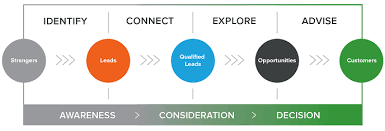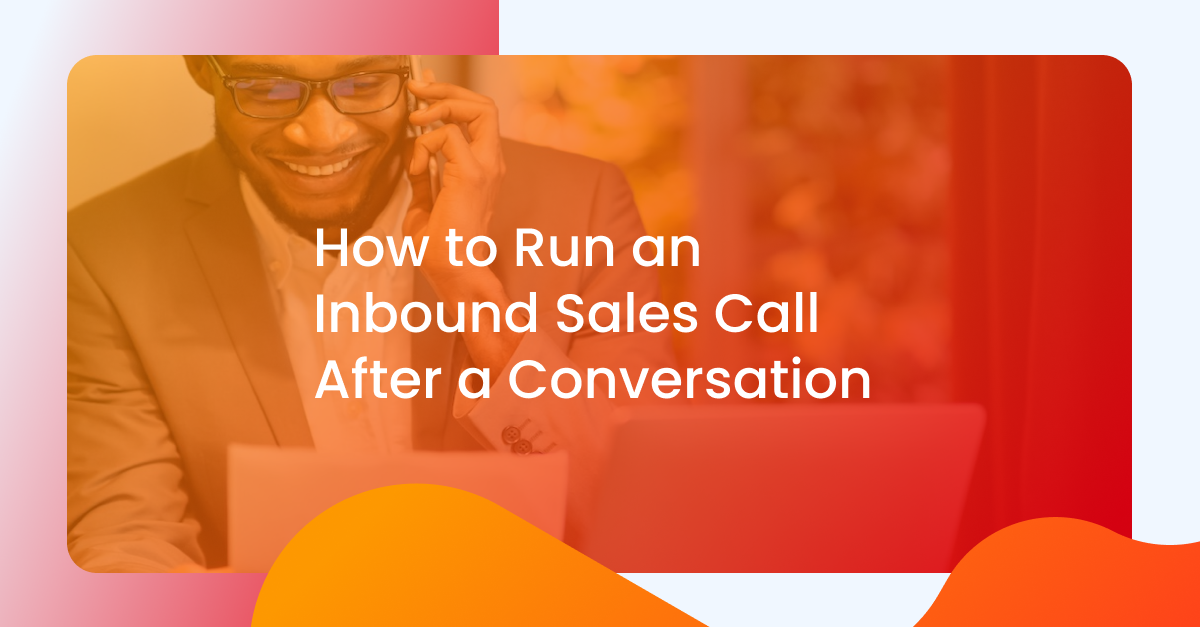A great website gets traffic, converts leads, and gets visitors to do what you want them to. But that’s only half the battle.
Even if you get them to book a sales call or product demo, your sales team needs to get them to buy your products or services.
You may need to rethink your sales process if you aren’t converting on these highly qualified leads. Because you shouldn’t be handling your inbound sales calls the same way you manage other sales calls.
Here’s what you should do to maximize your chances of success.
A Traditional Sales Process
First, let’s break down what your sales process probably looks like.
You get people on a call, build your rapport, and start rifling off discovery questions. Your discovery questions aim to get you to a point where you can pitch them.
Once you finally reach that point, you get to talk all about your company, the amazing product or solution you offer, and all the features and benefits it will provide them if they buy.
All of this is with the end goal of booking a follow-up call or sending a proposal.
Sound about right? That’s how most sales teams run their process. I used to run my sales calls like this until I found a better way.
Even if you think this system works for you, I guarantee there is room for improvement.
Selling Backwards
Ask to understand instead of rattling off your discovery chances and waiting for your opening to give your pitch. The questions are the most important part of the call. When done correctly, they are the pitch.
Instead of monologuing about features and benefits, you can strategically ask questions to keep your prospect engaged. Along with being more engaged, you can ask questions that proactively answer objections you know will come up during the sales process.
Resolving objections before they come up in a smooth, conversational format helps to remove barriers and makes it harder for the prospect to say no.
Be a Doctor, Not a DRIVE-THRU.
Have you ever asked the doctor for a #5 combo?
Of course not!
Patients don’t get to order their treatments or pick from a list of specials.
They tell the doctor their symptoms, let the expert diagnose their problems, and let them prescribe a solution.
You may not be a doctor, but you are an expert in your field, so don’t let your clients diagnose themselves.
This happens in our sales process all the time. We’ll have someone book a call, and they talk about how their marketing is off, so they want us to update their website and help with their social media.
It’s easy for us as an agency to give them a price, take a payment, and do what they asked for.
But we aren’t a drive-thru service. We don’t take orders, offer an additional side to upsell and move them along the line. There’s a reason we don’t have a menu.
If you are an agency, you need to remember this. You aren’t a commodity. You are a specialist.
So instead, you listen. Let the prospect tell you what they think they want. Continue to ask questions to find the root problem. Like a doctor, you must diagnose their condition to treat them properly.
Once you better understand their situation, you can prescribe the right solution.
Inbound sales funnel
So what does a successful sales funnel look like?
Plenty of people are online selling you sales funnels and coaching you on running a proper sales team. Many of these are good but built for much larger sales teams.
If you’re like most agencies I know, you are dealing with a 1-5 person sales team. So if you relate more to a solo sales seat than a 50-person team, this strategy is for you.
Inbound sales methodology from HubSpot

You can find more extensive training and get certified through HubSpot, but here’s a quick breakdown.
Identify
This is where you find good-fit prospects to put in your sales funnel. If you aren’t sure what your ideal customer looks like, you’ll need to step back and start there. Here are some resources that might help.
Connect
Create a plan to connect with your leads. This can be through email, LinkedIn outreach, or even trade shows. The goal is to contact your prospects and book a call.
Explore
Now you get to dive in and diagnose their issues. This usually takes place on a discovery call. Find out as much information as you can about the prospect, their company, what they are currently doing, and what’s working and what’s not.
Advise
Finally, you get to prescribe a solution. Consider everything that’s happened up to this point and provide them with the best solution to their problems.
Then they either buy or they don’t.
The critical thing to remember about inbound calls is that they start with exploring.
The prospect and your website accomplished the first two steps for you! They qualified themselves.
Then you can move right into the advise phase. You’ll recap what you covered in the exploratory call, tell them where they are, where they want to be, and how you can help them build a bridge to get there.
Recap
How we talk to people is different in an inbound sales process than in a traditional outbound approach. Make sure you are adjusting each call to the unique situation of your prospect and following the Inbound methodology. If you need more help with inbound marketing, specifically B2B inbound sales, check out our website or HubSpot for more resources.



